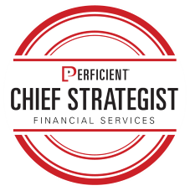Wealth management firms are at the dawn of this journey. You should focus on strategies that respond to Millennial behavior and operational excellence throughout the entire client lifecycle.
This focus is essential to creating the trust required to make all the complex technology work. If you want your clients to embrace artificial intelligence, machine learning, and robotics, you must sweat operational details each and every day.
As the saying goes, if you don’t know where you are going, any road will get you there. Start with a defined, agreed-upon, and well-understood client experience strategy – one that addresses all channels.
Take the time to employ careful design and management. The decisions you make affect the all-important and delicate “moments of truth” you have with your clients and require many different inputs from a varied audience.
LEARN FROM YOUR CLIENTS
We seem to have moved away from conducting primary research, instead relying on secondary and tertiary sources to determine what Millennial investors want and what technology to integrate into the client experience. When one is making technology investment decisions, paying more attention to primary sources can pay big dividends. Clients will tell you what they want – just ask them.
OBSERVE OPERATIONS
Listen to calls, visit the field, and see how work is actually done. Find the “tribal knowledge” describing what actually happens and what training or procedure documents don’t cover. Understand how advisors, assistants, and service reps use available systems to answer questions.
What questions are clients really asking? What vocabulary are they using? Is it similar to or different from the vocabulary the firm uses? What words matter to clients? What service failures do clients call about that are essentially unknown to the firm? What common traits do these clients share? What patterns arise among client types and transactions to suggest a unique value proposition or opportunity?
Observation will answer questions like these in ways traditional client satisfaction surveys can’t and don’t. Conduct focus groups and surveys, and benchmark.
These activities aren’t as popular as they used to be, but they are excellent ways to obtain data about the importance of new digital features and capabilities. They can also test ideas and hypotheses and assess the current utilization and success of other firms’ digital applications and capabilities.
SIMPLIFY, SIMPLIFY, SIMPLIFY
Be relentless in simplifying business processes and focusing on operational excellence to build trust. The industry is still making many unforced errors.
Address high-volume, complex transactions that frequently break, and apply automation to reduce cycle time and costs. Look at those complex, error-prone transactions that seem to plague every firm. We all know they exist, and the process of fixing them typically loses out to projects that address shiny new things.
The broken processes and transactions vary for each firm, but they do exist. When a client encounters them, the result is eroded trust.
Revisit major operational improvements. The industry has done a lot of work over the last ten years on major cross-functional improvements such as client onboarding, performance reporting, and data integration, primarily in response to regulatory mandates. Revisit these improvements.
A lot has changed, new technology capabilities are available, and what was thought of as state of the art a few short years ago may now be outdated, misaligned with your current digital strategy, and potentially harmful to the overall client experience.
Protect your client data. This is not just a security or risk management issue anymore – it has become about assuring clients that the trust they place in your firm is warranted. Offering clients a year of free credit monitoring after a breach is no substitute for robust, easy-to-understand data privacy policies that give your clients a greater degree of transparency and choice concerning their personal information online.
Get in front of regulations and laws like the recently signed California Consumer Privacy Act of 2018 – it will soon be here. Use data privacy not only as a trust builder but as a competitive advantage.
As mentioned previously, conventional wisdom says Millennials are ready to go fully digital. Gartner predicts that by 2020 customers will manage 85% of their relationship with the enterprise without human interaction. It’s no secret that wealth management firms struggle to integrate data across legacy system silos.
While progress has been made, more must be done. Despite significant investment, Forrester’s 2018 Customer Experience Index rankings actually decreased in the wealth management industry. Client expectations are outstripping actual improvement; many careless, unforced errors are still out there.
The implication of all the secondary and tertiary information is that wealth management firms must act immediately for continued survival.
The pundits aren’t wrong. The trends are real. However, before you unquestioningly look to artificial intelligence, machine learning, robotics, and intelligent workflows as solutions, take a lesson from history about the appropriate use of technology, its limitations, and its impact on the overall client experience.
In the 1990s, a challenge arose in the customer service industry – one similar to what wealth management is facing today. An explosion of new technologies promised to provide faster, better, less-expensive service to a population eager and willing to use them.
The industry implemented voice response, speech recognition, internet portals, skills-based routing, screen-pops, predictive dialing, knowledge bases, customer forums, voice biometrics, and IP telephony. It outsourced operations and added email, chat, and co-browsing to the mix. This was done in pursuit of a better, less expensive customer service experience.
And yet, 20 years later, one could argue that all that was really accomplished was to ruin customer service. To make it annoying. Google “making customer service human again” and see what comes up.
We recently published a guide exploring how to build trust in wealth management. You can download the guide below or by clicking here.


